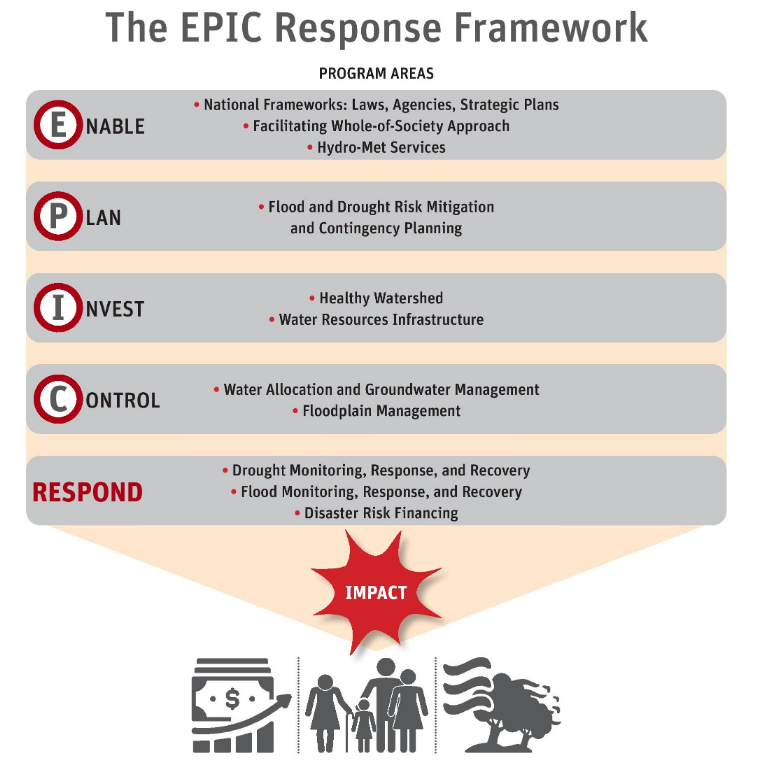In June 2021, The World Bank published their Innovative Governance for Flood and Drought Risk Management. Since release of this guidance, floods and droughts in global news headlines have increased. The scale of the crisis is now becoming ever more prevalent. The World Bank suggests over 3 billion people have been affected, with staggering costs in human suffering and economic loss in the last two decades. With the social costs to the poor and marginalised highest.
Societies need to adapt, and governments must prioritise, accelerate and scale up their response mechanisms. This requires innovative governance and risk management to navigate uncertainty, reduce duplication, make more efficient use of public resources, and protect communities, economies, and ecosystems.
Key Messages from the report:
Hydro-climatic disasters can have intergenerational poverty impacts, spur migration, and contribute to geopolitical instability. They need not become disasters: Hydro-climatology looks at interactions between weather, watersheds, and water. Hydro-climatic extremes, such as periods of abnormal dryness or wetness, are natural hazards and are increasing in a warming world. Whether a hydro-climatic hazard results in a flood or drought disaster depends on how society manages these risks.
Some progress has been made but we have not yet come to terms with enormity of the challenge: Over the last few decades, many countries have made significant improvements in managing hydro-climatic risks, supported by international initiatives such as the Sendai Framework for Disaster Risk Reduction, the Paris Climate Agreement, and the Sustainable Development Goals. But those are not enough, and we are falling behind. National governments often deal with floods and droughts in a siloed manner, without fully encompassing the complexity and interlinkages between these two types of hazards.
A new perspective, referred to as an "EPIC Response," is offered to better manage hydro-climatic risks. This perspective looks at floods and droughts not as independent events but rather as different ends of the same hydro-climatic spectrum that are inextricably linked. It provides a comprehensive framework to help national governments lead a whole-of-society effort to manage these risks.
The term EPIC Response is a mnemonic for remembering the key elements of this perspective, as shown in the accompanying graphic—it also connotes the level of effort that is required.

